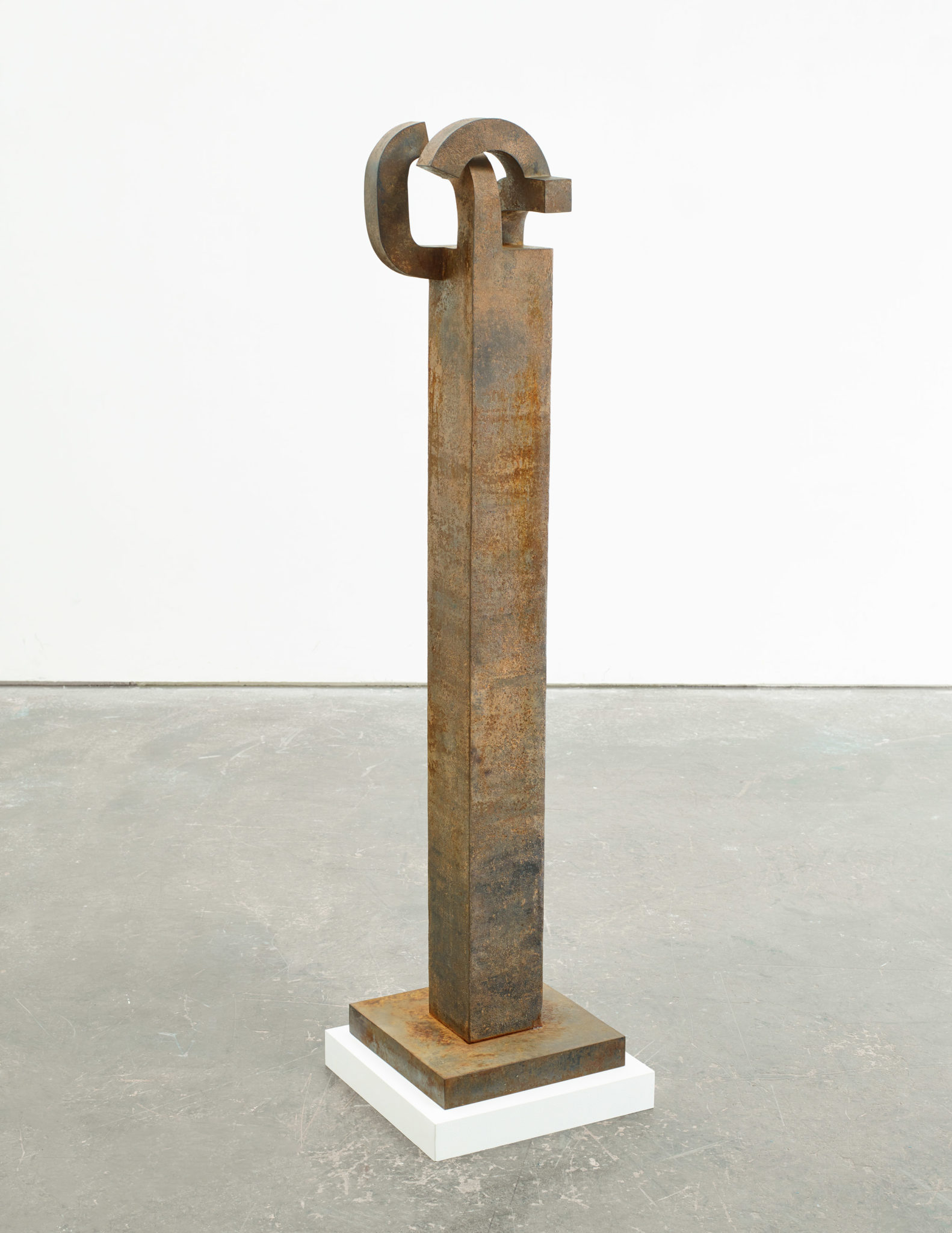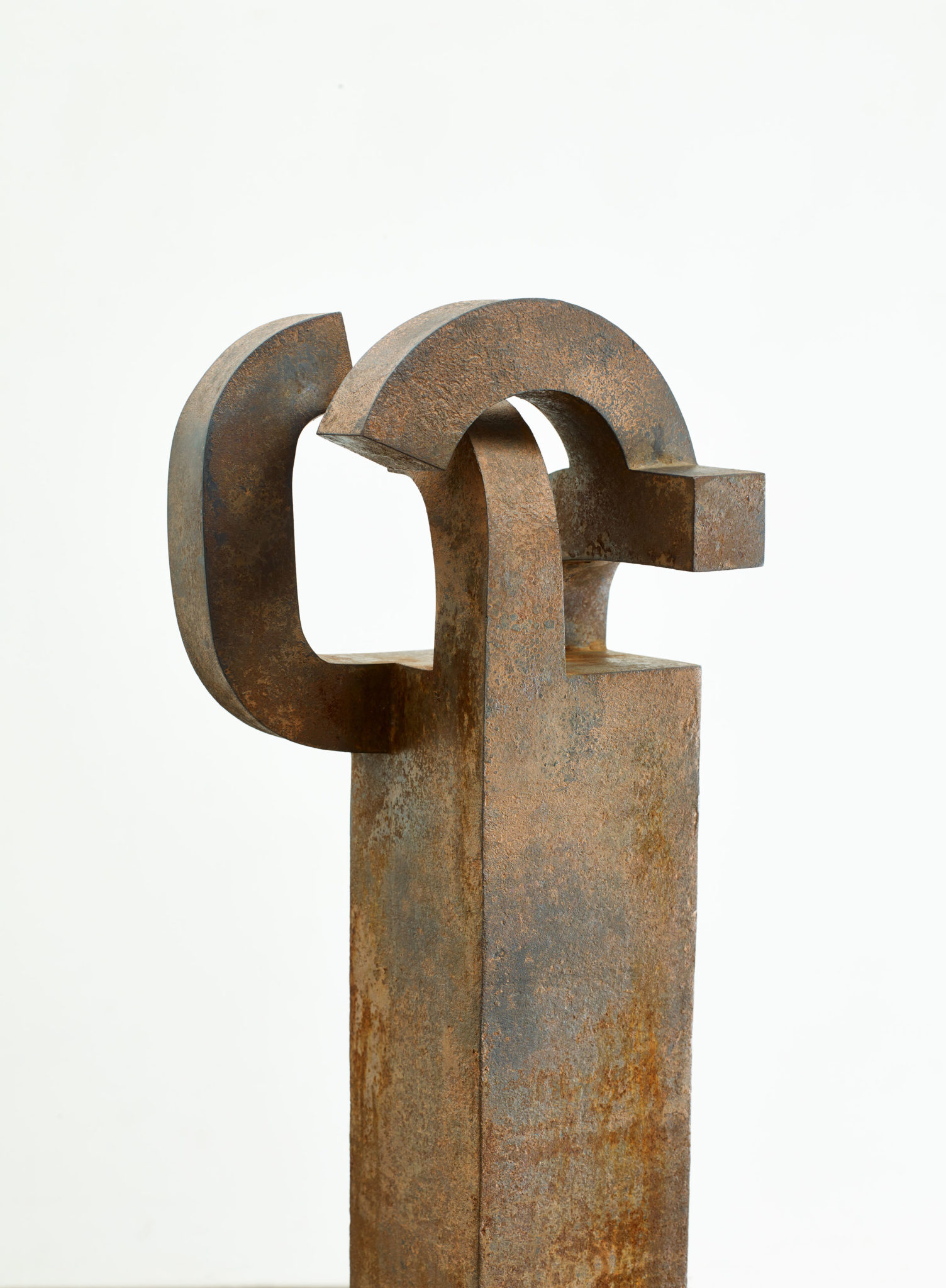Eduardo Chillida
Besaka, 1987
Iron
44 7⁄8 × 7 7⁄8 × 6 1⁄8 inches (114 × 20 × 15.5 cm)
© 2018 Artists Rights Society (ARS), New York / VEGAP, Madrid
Space must be conceived in terms of plastic volume, instead of being fixed with the help of lines onto the imaginary surface of the paper. I am unable to imagine it other than in three dimensions. That is the way form acquires its structure. Form springs spontaneously from the needs of the space that builds its dwelling like an animal its shell. Just like this animal, I am also an architect of the void.
— Eduardo Chillida, Quoted in Kosme de Barañano, Chillida: 1948–1998 (Madrid: Museo Nacional Centro de Arte Reina Sofía, 2000), 62.
In 2003, curator Giovanni Carandente wrote that the sculptural work of Basque artist Eduardo Chillida (1924–2002) “established neither a confrontation nor a dialogue tout court with space; rather, it became its materialization.” Indeed, this leading figure of site-specific and monumental sculpture dedicated his career to exploring the ways in which we produce and are defined by environmental spaces.
Besaka is definitive of Chillida’s output across scale: it is stately and solid, but it also has a curious asymmetry. The totemic sculpture of rusted, forged iron comprises an upright shaft that extends from a base toward three limbs. These appendages—each a hooked semi-circle—appear to have been captured in an attempt to unfurl from the top of the structure. Instead of calling attention to themselves, these limbs serve to frame, or make visible, the negative spaces they create. As such, the work fuses hermetic interiority with outward-reaching openness—it renders space and form indivisible.
The weathered surfaces of Chillida’s sculptures underscore their relationship to duration. But so do his forms: each offers a range of profiles that can only be experienced if the work is walked around in full. The prongs of Besaka, for example, create a muscular tension that comes into relief as each bending, compressed limb reaches its terminus. But even given this compositional dynamism, the work possesses a simplicity and balance that, like all of Chillida’s work, refers back to nature.
Chillida spent three years in Madrid studying architecture before turning to drawing and finally to sculpture. His work reveals this training as it merges the logics of sculpture and architecture. Each form features rigorous structural organization and illustrates the artist’s discipline with materials, planning, and scale. Chillida’s early output was hewn from stone and plaster and engaged both the human figure and the natural world, but when he returned to the Basque region in 1951, he became focused on the definition of spatial volume through form. He abandoned plaster for iron, wood, and steel; materials that represent Basque industrial, agricultural, and architectural traditions. During this period, he also turned to the spare geometrical vocabulary he maintained for the rest of his career.



